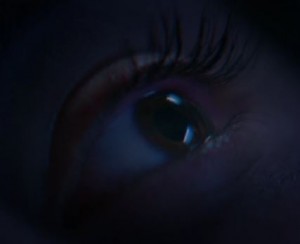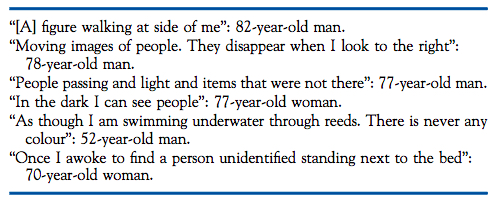 A survey of 239 patients who had eyes surgically removed has turned up an interesting phenomenon. Some 60% of them report phantom images from their missing eyes.
A survey of 239 patients who had eyes surgically removed has turned up an interesting phenomenon. Some 60% of them report phantom images from their missing eyes.
We’re familiar with phantom limbs: tingling and other sensations from limbs that are no longer there. Phantom Eye Syndrome (PES) is not new, but a recent study of patients who lost one eye to uveal melanoma is the most thorough to date, and the results provide an interesting window into the way we process visual perception.
Some patients just had things you might expect, like “eye” pain and tingling. Others actually saw things with eyes they no longer had:
Patients with visual symptoms most often saw simple shapes and colors. But some people reported more distinct images, “for example, resembling wallpaper, a kaleidoscope, or fireworks, or even specific scenes and people,” the authors write.
Then there were the ghosts.
Some people said they had seen strangers haunting their fields of vision, as in these survey responses:
 I think it’s a fascinating footnote to my consideration of the psychological, scientific, and religious roots of reports of ghostly phenomenon. People nod sagely when phantom limb syndrome is mentioned, but the truth is that we really don’t know exactly how it works, and we have even less of a clue about phantom eye syndrome.
I think it’s a fascinating footnote to my consideration of the psychological, scientific, and religious roots of reports of ghostly phenomenon. People nod sagely when phantom limb syndrome is mentioned, but the truth is that we really don’t know exactly how it works, and we have even less of a clue about phantom eye syndrome.
Obviously, the neural pathways that carry information continue to carry something even when one end of the path is lost. Visual receptors remain even when the eye is gone.
Where are the eyes getting the data to send to the brain as an image? No clue.
On a somewhat related topic is the subject of sleep paralysis, which often is accompanied by visions of a dark figure. When a healthy person is in deep REM, the body is paralyzed except for eye movement and autonomous systems such as respiration. This is what usually keeps people from acting out what they dream.
One theory of sleep paralysis is that a person cycles out of deep REM in the “wrong” order, leaving the individual in a partly waking state while still paralyzed.
That’s all well and good, but what about the dark man reported by many, many people who suffer from this? (Some estimates suggests about 6% of the population experiences it at some point.) The reports are remarkably consistent. Many of them clearly identify a Grim Reaper-like figure by their beds. Indeed, when I shared this post to Facebook, a sober, sane, intelligent friend said it happened to her.
The Fortean researcher and debunker Mark Chorvinsky (he proved, to my satisfaction at least, that make-up legend John Cambers was behind the Patterson bigfoot footage) collected countless eyewitness reports of “reaper sightings,” and was surprised by how consistent and inexplicable they were.
He died before he could publish.











